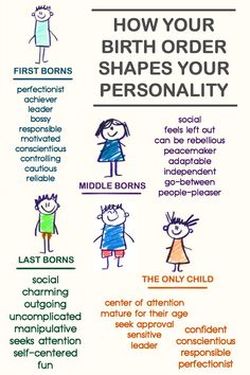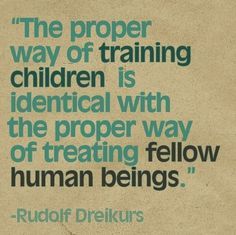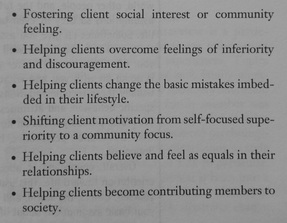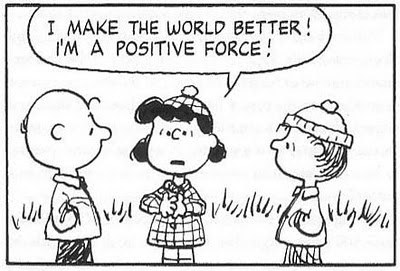Ways Of Being:
The role of the counselor is to be engage with the client with trust, empathy, and nonjudgmental characteristics. The therapist conducts a questionnaire about the family constellation and life assessment. Completing this questionnaire, the therapist has an idea about the client's childhood and therapy goal. The therapist helps the client understand their psychopathology, and how to change. The therapist conducts therapy from an idiographic approach, which means the therapist does not address the client as a diagnosis, but from a holistic view of the whole person.
The role of the counselor is to be engage with the client with trust, empathy, and nonjudgmental characteristics. The therapist conducts a questionnaire about the family constellation and life assessment. Completing this questionnaire, the therapist has an idea about the client's childhood and therapy goal. The therapist helps the client understand their psychopathology, and how to change. The therapist conducts therapy from an idiographic approach, which means the therapist does not address the client as a diagnosis, but from a holistic view of the whole person.
The role the therapeutic relationship is based on trust, effective listening, respect and caring. It is an equal relationship between client and therapist that experience the journey together through goals, encouragement, early recollections, and social context. "Clients are encouraged to be active participants in therapy" (Sommers-Flanagan, 93).
 adleridaho.com
adleridaho.com
Ways Of Understanding:
The view of human nature of Adlerian therapy is a combination of nurture vs. nature; it is formed from the soft determinism framework. One's past and present has an influence on behavior and goals for the future. Adlerian therapist believe that social influences and childhood experiences have a great impact on one's motives and view on life. One strives for superiority, purpose, and for the feeling of community.
Rudolph Dreikurs had an extensive impact in Adlerian therapy with "the four goals of misbehavior, the concept of purposeful striving to children," 1. Attention-getting 2. Power 3. Revenge 4. Display of inadequacy (Sommers-Flanagan, 82). The way children behave is based in their reaction from their caregiver, their action is not random. Dreikurs main concept is that children need to feel like they belong.
View of problem/maladaptive behavior come from early childhood discouragement, self-interest, basic mistakes and feeling of inferiority.Psychopathology is described as discouragement, "The discouraged individual is unable or unwilling to approach and deal with essential life task" (Sommers-Flanagan, 91). The tasks of life by Adler include 1. work or occupation, 2. social relationships, 3. love and marriage. Dreikurs and Mosak added 4. self, and 5. spirituality. The self is derived from childhood, Mosak and Maniacci described it further and broke it into four dimensions 1. survival of self, 2. body image, 3. opinion, and 4. evaluation. Mosak and Maniacci also described spirituality into five main issues 1. relationship with God, 2. Religion, 3. Relationship to the universe, 4. metaphysical issues, and 5. meaning of life. Then, Dinkmeyer and Sperry added 6. parenting and family. Social relationships are important, if the client focuses on self-interest above social interest to gain superiority over others it is an unhealthy behavior. Basic mistakes are maladaptive views of style of life and self that continues to cause pain. Feeling of inferiority can cause one's life to become or seem unmanageable.
The view of human nature of Adlerian therapy is a combination of nurture vs. nature; it is formed from the soft determinism framework. One's past and present has an influence on behavior and goals for the future. Adlerian therapist believe that social influences and childhood experiences have a great impact on one's motives and view on life. One strives for superiority, purpose, and for the feeling of community.
Rudolph Dreikurs had an extensive impact in Adlerian therapy with "the four goals of misbehavior, the concept of purposeful striving to children," 1. Attention-getting 2. Power 3. Revenge 4. Display of inadequacy (Sommers-Flanagan, 82). The way children behave is based in their reaction from their caregiver, their action is not random. Dreikurs main concept is that children need to feel like they belong.
View of problem/maladaptive behavior come from early childhood discouragement, self-interest, basic mistakes and feeling of inferiority.Psychopathology is described as discouragement, "The discouraged individual is unable or unwilling to approach and deal with essential life task" (Sommers-Flanagan, 91). The tasks of life by Adler include 1. work or occupation, 2. social relationships, 3. love and marriage. Dreikurs and Mosak added 4. self, and 5. spirituality. The self is derived from childhood, Mosak and Maniacci described it further and broke it into four dimensions 1. survival of self, 2. body image, 3. opinion, and 4. evaluation. Mosak and Maniacci also described spirituality into five main issues 1. relationship with God, 2. Religion, 3. Relationship to the universe, 4. metaphysical issues, and 5. meaning of life. Then, Dinkmeyer and Sperry added 6. parenting and family. Social relationships are important, if the client focuses on self-interest above social interest to gain superiority over others it is an unhealthy behavior. Basic mistakes are maladaptive views of style of life and self that continues to cause pain. Feeling of inferiority can cause one's life to become or seem unmanageable.
 http://socksonanoctopus.com/blog/2015/07/quote-of-the-day-july-3-2015
http://socksonanoctopus.com/blog/2015/07/quote-of-the-day-july-3-2015
View of health/adaptive behavior is one who has received encouragement, striving for superiority and social interest. Striving for superiority is the most basic motive, it is overcoming and improving interpersonal deficiencies. Social interest is a deep connection with the community, a sense of belonging.
The goal of Adlerian theory is to increase self-awareness, optimistic life view, change basic mistakes, and "the ultimate goal for psychotherapy is the development or enhancement of the client's social interest" (Sommers-Flanagan, 84).
The key concepts of Adlerian therapy are holistic and idiographic approach. Increasing the client's social interest, striving for superiority, and enhancing the style of life through optimism.
Therapeutic change is view by four stages; 1. forming the therapeutic relationship through actively listening, empathy, and respect. 2. lifestyle assessment and analysis, by gaining information about family constellation, questions about client’s purpose, and early recollections. 3. interpretation and insight, by interpreting the previous information and behaviors and producing insight, which actives action for change. 4. reorientation direct action for change and deeper insights (Sommers-Flanagan, 95-101)
The goal of Adlerian theory is to increase self-awareness, optimistic life view, change basic mistakes, and "the ultimate goal for psychotherapy is the development or enhancement of the client's social interest" (Sommers-Flanagan, 84).
The key concepts of Adlerian therapy are holistic and idiographic approach. Increasing the client's social interest, striving for superiority, and enhancing the style of life through optimism.
Therapeutic change is view by four stages; 1. forming the therapeutic relationship through actively listening, empathy, and respect. 2. lifestyle assessment and analysis, by gaining information about family constellation, questions about client’s purpose, and early recollections. 3. interpretation and insight, by interpreting the previous information and behaviors and producing insight, which actives action for change. 4. reorientation direct action for change and deeper insights (Sommers-Flanagan, 95-101)
 adlerian.us
adlerian.us
Ways Of Intervening:
Techniques of Adlerian therapy are: The future autobiography technique enables clients to actively think about their future and set obtainable goals; it is also used to assess the client's ideal self. Creating new images that reflective the client's self-images of past, present, and future positively. Acting "as if" lets the client experiment what it would be like if they change and gain new perspectives. Reflecting "as if" in three phases; 1. reflecting- clients consider what the new action would be like and the outcomes. 2. planning- the client and therapist decide on what behaviors to change and the order to take action. 3. implementing- the client takes action and acts out the new behavior. The push-button technique " Is designed to improve emotional control and is an ABA reversal experimental design that teaches clients the power of thoughts and images over feelings" (Sommer-Flanagan 103). Spitting in the soup is to use confrontation to inhibit the clients use of avoidance and to provide insight. Catching oneself is the awareness of maladaptive behavior when it arises. Task setting and indirect suggestion helps the client set goals. Paradoxical strategies are high risk and some clients feel they have more control when prescribed symptoms. Advice, suggestion, and direction or "I'll Betcha" provides the clients with a less risky situation and motivation.
Mosak developed appropriate therapy goals that "articulates how clients and their problems--constistent with Adlerian theory--are viewed as inseparable units" (Sommers-Flanagan, 93), as listed below.
Multicultural considerations are Adler's theory was supportive of equality, feminism, and the lower socioeconomically clients. Adlerian therapy may not be the best fit for collectivist cultural groups because the focus is on individuals. The therapy requires private information and some cultures keep personal information private. Like all therapies cultural sensitivity is paramount.
Adlerian therapy's primary focus is on individuals. It focuses on how the individual is effected by social influences, early recollections, and events. Although, the analysis focuses on family and community dynamics the therapy focuses on the individual's views and how to develop adaptive behaviors.
Limitations of Adlerian therapy is a process by analyzing the past, present, and future; it is not a quick fix. The theory has limited evidence-based research.
Techniques of Adlerian therapy are: The future autobiography technique enables clients to actively think about their future and set obtainable goals; it is also used to assess the client's ideal self. Creating new images that reflective the client's self-images of past, present, and future positively. Acting "as if" lets the client experiment what it would be like if they change and gain new perspectives. Reflecting "as if" in three phases; 1. reflecting- clients consider what the new action would be like and the outcomes. 2. planning- the client and therapist decide on what behaviors to change and the order to take action. 3. implementing- the client takes action and acts out the new behavior. The push-button technique " Is designed to improve emotional control and is an ABA reversal experimental design that teaches clients the power of thoughts and images over feelings" (Sommer-Flanagan 103). Spitting in the soup is to use confrontation to inhibit the clients use of avoidance and to provide insight. Catching oneself is the awareness of maladaptive behavior when it arises. Task setting and indirect suggestion helps the client set goals. Paradoxical strategies are high risk and some clients feel they have more control when prescribed symptoms. Advice, suggestion, and direction or "I'll Betcha" provides the clients with a less risky situation and motivation.
Mosak developed appropriate therapy goals that "articulates how clients and their problems--constistent with Adlerian theory--are viewed as inseparable units" (Sommers-Flanagan, 93), as listed below.
Multicultural considerations are Adler's theory was supportive of equality, feminism, and the lower socioeconomically clients. Adlerian therapy may not be the best fit for collectivist cultural groups because the focus is on individuals. The therapy requires private information and some cultures keep personal information private. Like all therapies cultural sensitivity is paramount.
Adlerian therapy's primary focus is on individuals. It focuses on how the individual is effected by social influences, early recollections, and events. Although, the analysis focuses on family and community dynamics the therapy focuses on the individual's views and how to develop adaptive behaviors.
Limitations of Adlerian therapy is a process by analyzing the past, present, and future; it is not a quick fix. The theory has limited evidence-based research.
References:
Sommers-Flanagan, J., & Sommers-Flanagan, R. (2015). Individual Psychology and Adlerian Therapy. In Counseling and Psychotherapy Theories in Context and Practice: Skills, Stra (pp. 79-116). John Wiley & Sons.
Sommers-Flanagan, J., & Sommers-Flanagan, R. (2015). Individual Psychology and Adlerian Therapy. In Counseling and Psychotherapy Theories in Context and Practice: Skills, Stra (pp. 79-116). John Wiley & Sons.







